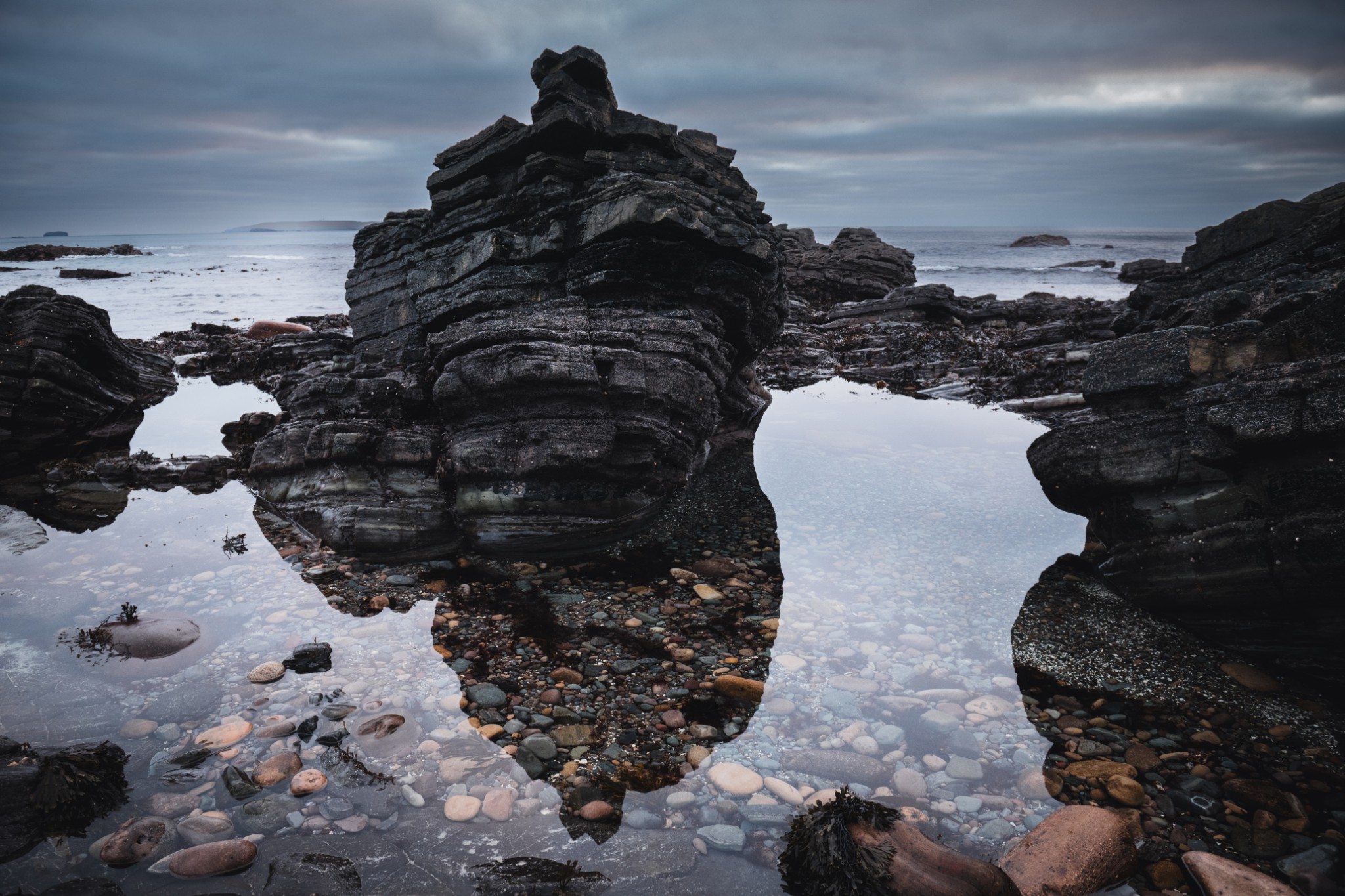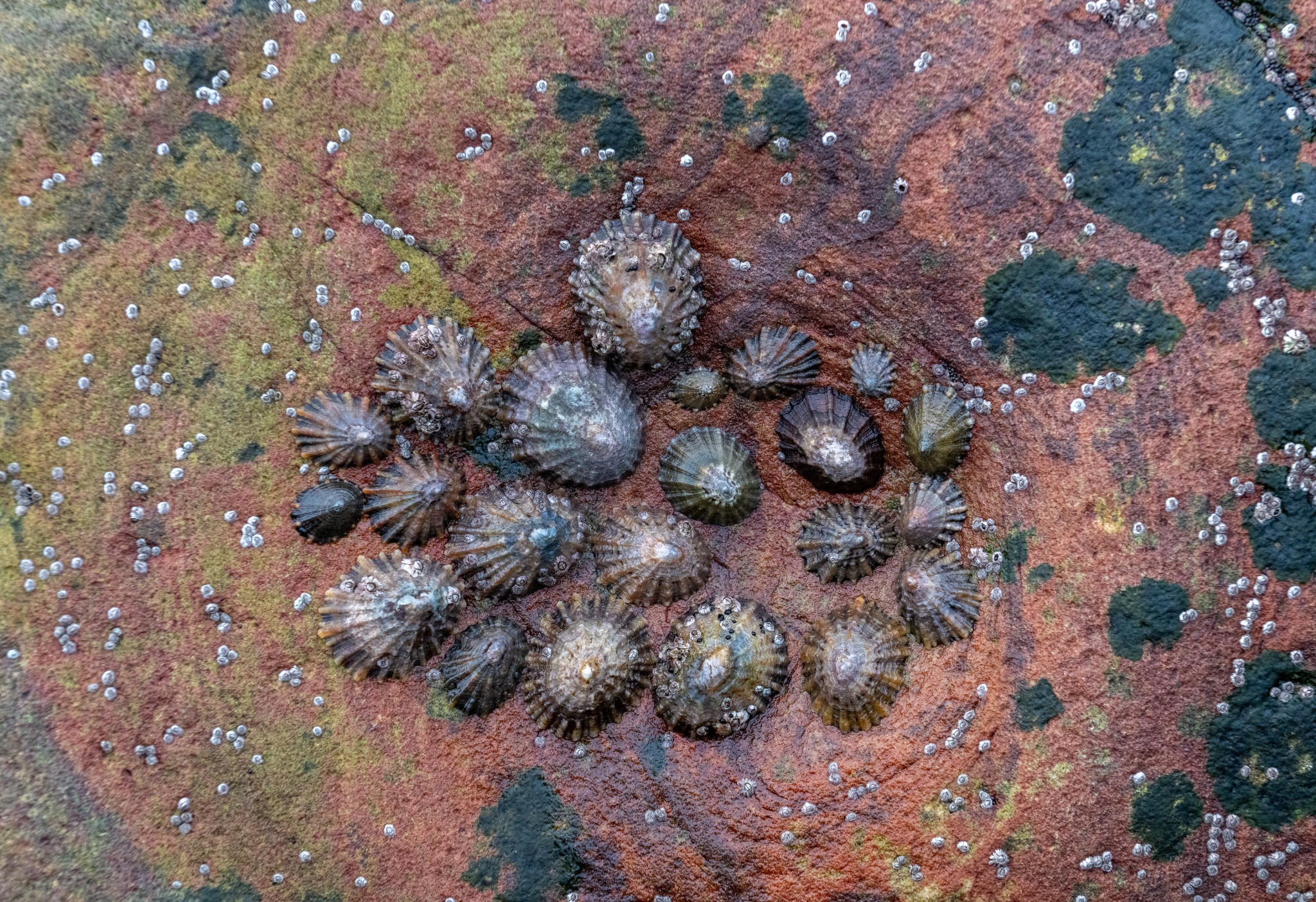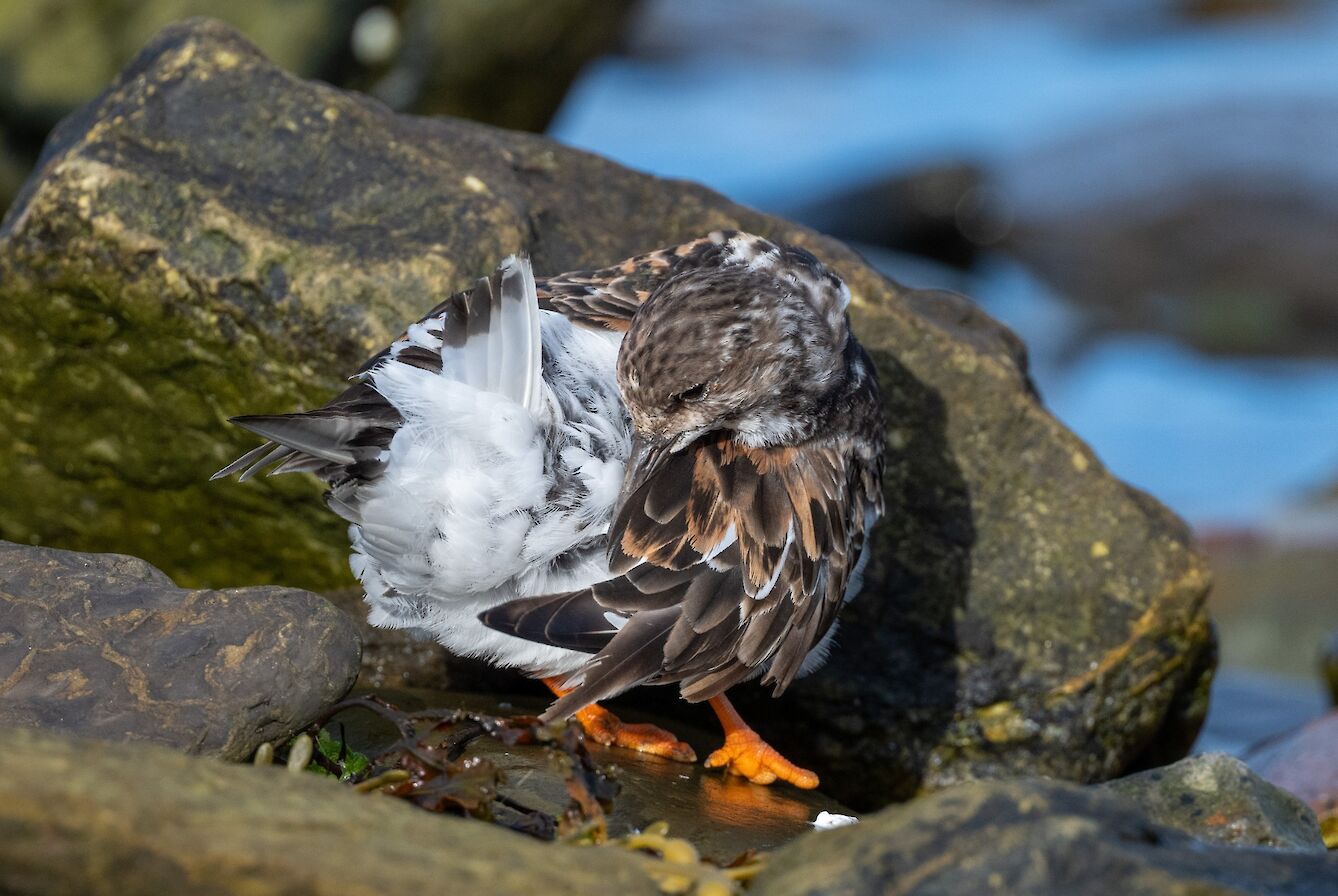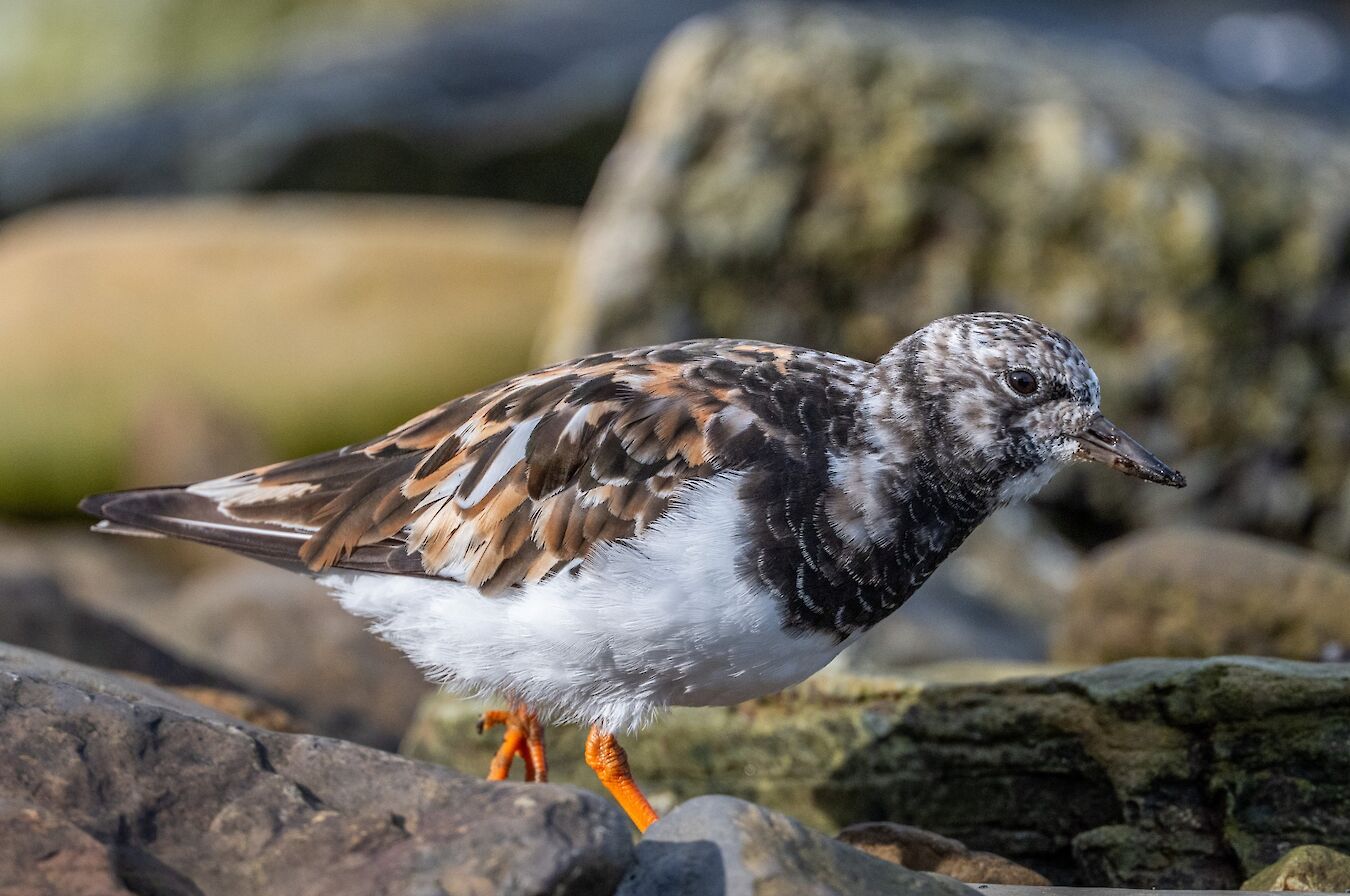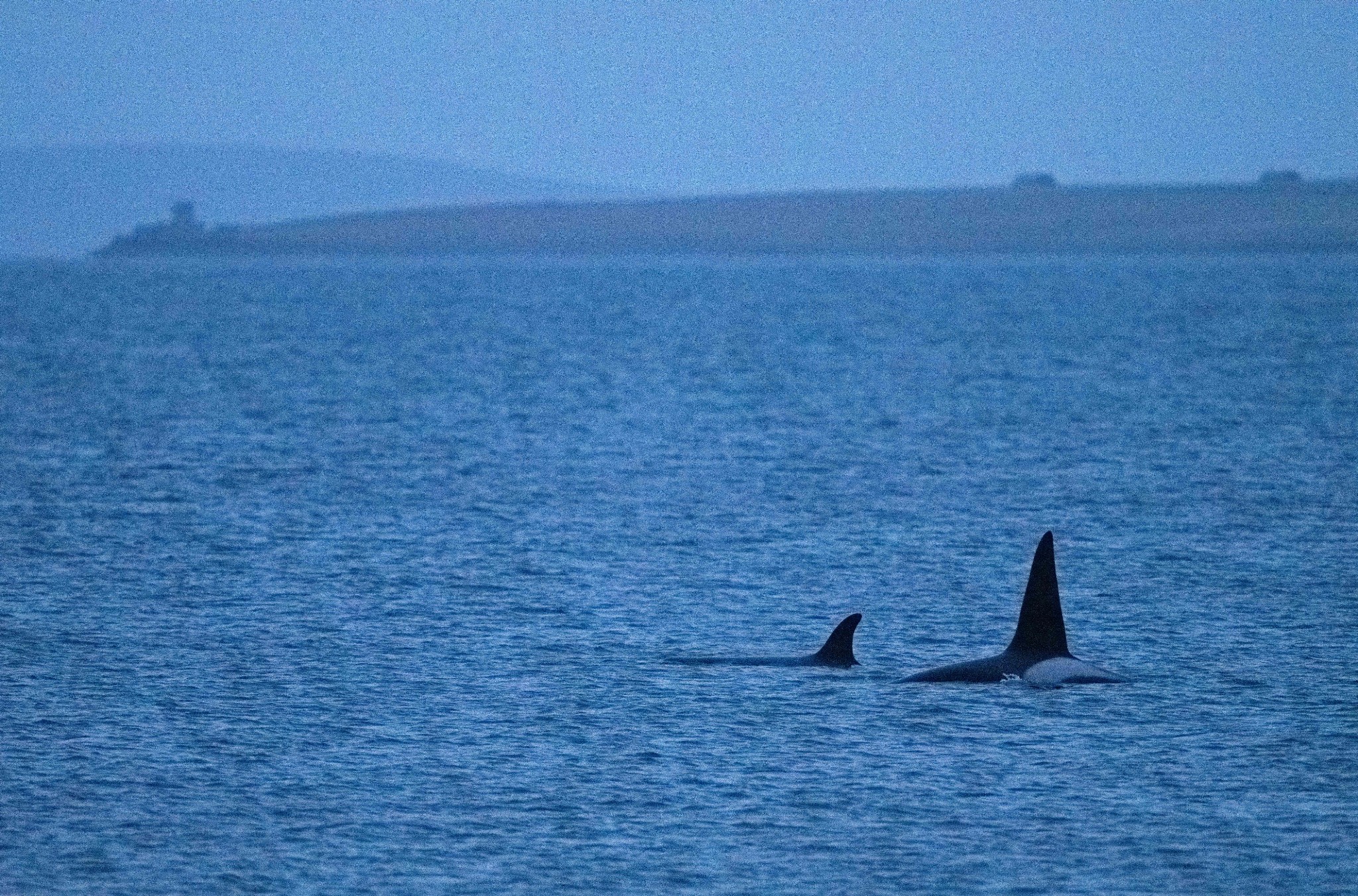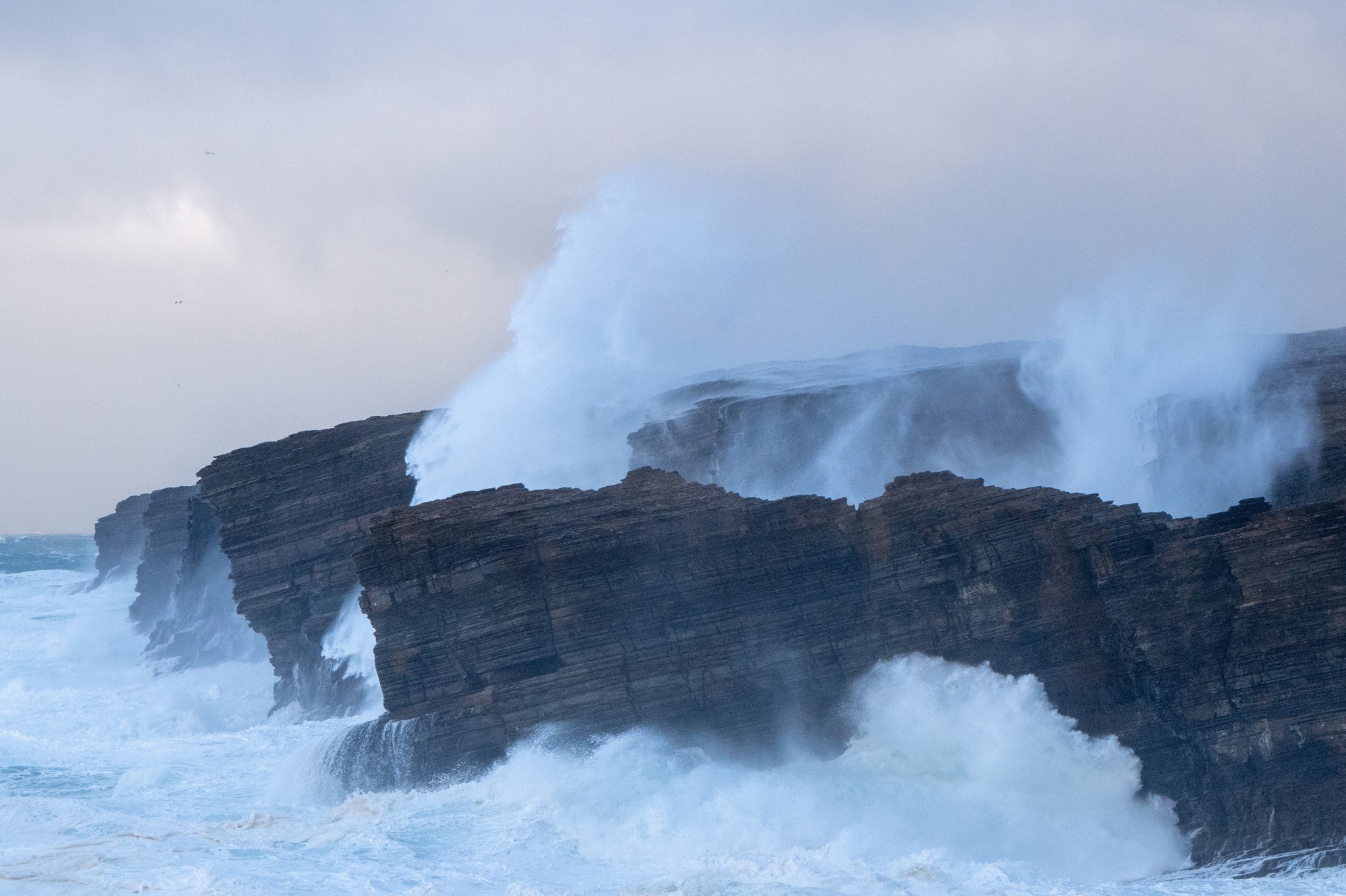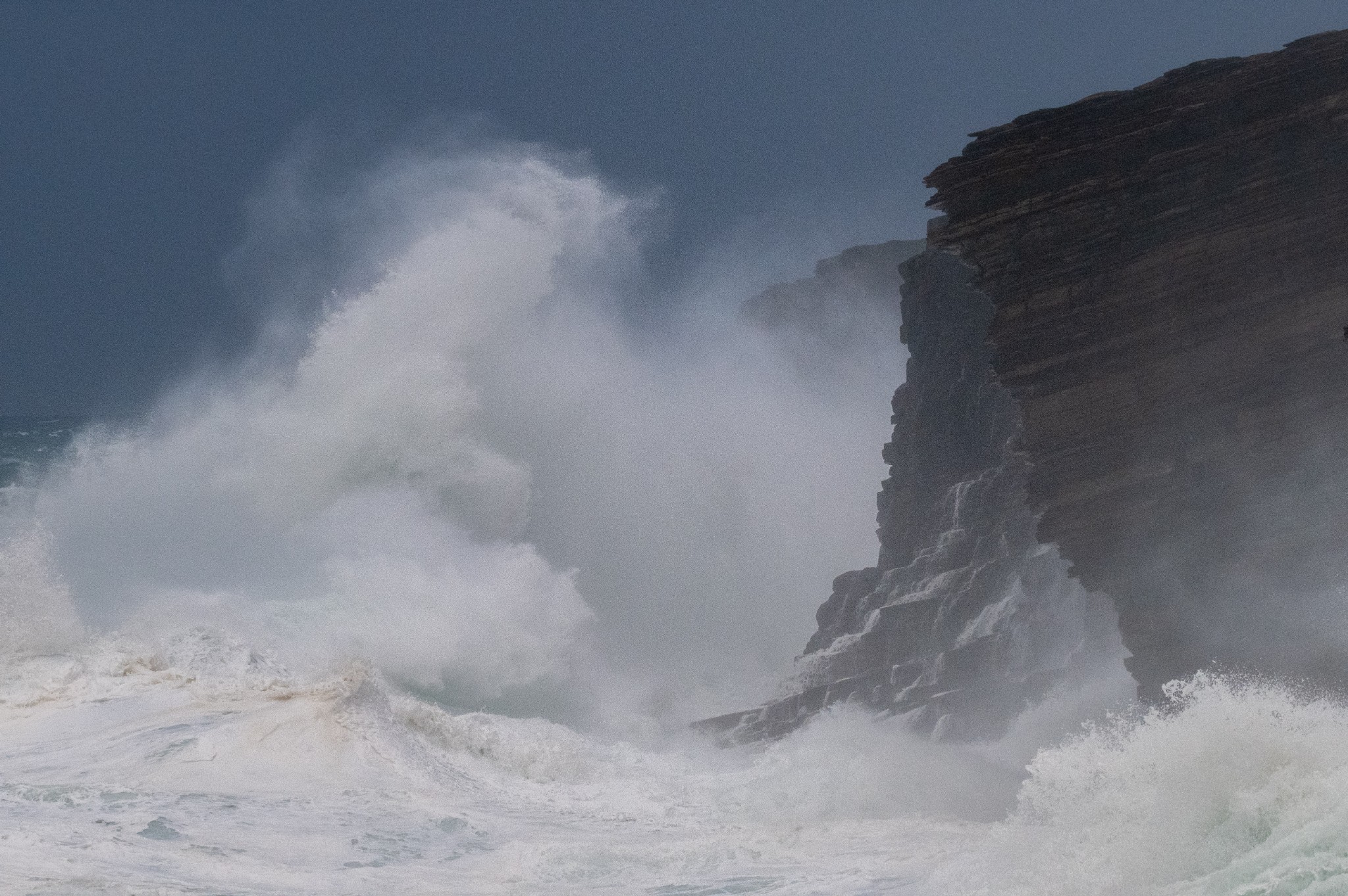Full sunshine at 8:50am said the Met Office forecast. As a gentle wave runs up the beach and laps at my feet, I let out a sigh. Looking east towards the island of Copinsay the horizon goes from grey to darker grey above. There won’t be a sunrise this morning.
Well, that’s not technically true, there will of course be a sunrise, I just won’t be seeing one from Dingieshowe beach given the cloud cover.
With so little light to utilise, December is always a challenging month photographically, more so when it’s cloudy as it’s just so much darker as a result. I had hoped to use the low light to photograph Dingieshowe beach using a slow shutter speed, rendering the incoming waves in such a way that they give the impression of motion. This technique can be overdone but I quite like it when done in a subtle way. There was nothing to stop me still doing it but I wanted the sun to creep over the horizon and perhaps add some highlights to the blurred waves.
‘What are you going to do now then?’, I remember thinking to myself. It’s fair to say ideas weren’t spilling from my mind. So, I sat on a rock at the far end of the beach, became distracted by some Otter spraint and put my camera down. I just sat for a while, and looked, still nothing came to mind as I dwelled on that promise of a sunrise.
But then I noticed a large round rock that looked like it was floating in the rockpool in which it sat. I don’t know why but I suddenly felt as if I could ‘see’ differently. I noticed things and became interested in shapes and textures and shadows that I had completely overlooked just minutes before.
Far from being a disadvantage, the overcast conditions meant that the rock pools, as yet untouched by the incoming tide, were mirror calm. They appeared to inhabit two worlds, one an opaque layer where the weak sunlight was reflected back, and another formed under the shadow of nearby rocks and ledges. In these the water was crystal clear, dark and frigid looking where I could see all the geological inhabitants of the pool, the other a milky body of water where boulders half floated on the surface.
To see such a distinct difference in the play of light and its effect on something seemingly mundane was mesmerising. Upon looking closer the textures of seaweeds and rocks encrusted with barnacles and limpets appear heightened. This part of the coast would be considered to be pretty ‘high energy’ at times – it experiences quite heavy wave action given its exposed nature facing out into the North Sea.
I’m pretty sure these are china or rough limpets as they are heavily ridged and the dome on some of them at least is offset, they are less ‘pyramid’ like than the common limpet. They themselves provide a home for the smaller barnacles and so this part of the shore, sometimes referred to as the upper shore, is where they have become perfectly adapted to. Here they will use their muscular foot to create a vacuum allowing them to both deflect the worst motion of the waves whilst underwater and to prevent themselves from drying out when exposed at low tide.
A flock of small waders flies past close to the surface of the sea and lands on some rocky shore further around the coast. The light too is changing and by the time I make my way down to where the turnstones are it’s almost too bright - Orkney is nothing if not changeable.
If you approach them slowly and then choose a rock to sit on, turnstones will often allow a close approach and go about the important business of turning over stones. Under these stones will be a plethora of invertebrate life on which turnstones like to feed. Whilst their bill has evolved to be something of a specialism, they are actually rather adaptable birds and can be seen happily feeding amongst cast kelp or even in fields near the shore if the weather is particularly bad.
As I watch them, I can hear the tinkling of small rocks being pushed this way and that as they move up the shore towards me. They’re such beautiful little birds, their plumage a rich mix of hazel and rust. One has stopped in front of me and started preening, its feathers are fluffed out and about to be taken care of. It stretches its head all the way back to the base of its tail because this is where the oil or uropygial gland is to be found and rubs its beak on it. This oil will now coat the feathers and keep them in top condition.
As the turnstone rests the shore starts to lose its shine, the break in cloud cover has been brief and I head home as the light fades. I’m making a cup of tea after having taken Lyra for a walk when my phone pings. There is a group of orca in Kirkwall Bay. I can’t believe it, it’s 3:15pm and almost dark. I haven’t had time to download my images from earlier in the day and so I throw my camera bag over my shoulder and head out to Hatston where they were last seen.
As I arrive there is already a small gathering of folk watching what turns out to be one half of the group known as the ’27s’. I say one half because the other half were still in Shetland at the time. Despite the very low light they are easy to see and they seem to be mostly just lolling around on the surface. It’s so dark I use a setting on the camera I’ve never tried before, pushing my ISO all the way up to 25,000. This is new territory for me! But it’s done in the knowledge that it will allow me to get a few images, though the result will likely lack definition and be quite noisy. That doesn’t matter on this occasion though, it’s a delight just to see the orca as they head back out into the bay and disappear into the evening.
December, for all its darkness had been quite well behaved until recently. When gusts of over 80mph are forecast it makes even islanders take a bit more notice, and so I went west to try and make the most of it. Yesnaby is one of Orkney’s most recognisable places, a spectacular and dramatic coast of high cliffs and sea caves facing out onto the often-furious Atlantic Ocean.
I should say that I waited until the second day of the storm before heading out when conditions were a little kinder, though that’s not saying much! I know this stretch of coast well and there are places I can get out of the wind to a degree that will allow me to work for a time at least. I was stopped in my tracks though when I looked out towards the Noust of Bigging, the waves were absolutely enormous and some of the largest I’ve ever seen.
It goes without saying that it pays to be careful in these conditions. I’m not in fear of being hit by a wave, more so something much less glamorous. When these monstrous waves hit the cliffs, they create a huge amount of sea spray which then coats everything it lands on resulting in very slippy conditions underfoot.
When I reach the headland, I’m afforded a little shelter from the wind and it allows me to shoot north up the coast where the dark cliffs are being pounded by white rollers. It’s stunning, watching the power of nature can be addictive but I need to remain focused.
I walked south to this position rather than north to Borwick because the walk isn’t as long and if the rain hitting the car on the way here was anything to go by, I really don’t want to be caught in one of those showers. That’s not my immediate concern however, as the waves crash there’s a blurring of sea and sky, there is so much spray in the air that it’s impossible to keep it off the lens. I prop up my camera bag and shelter behind it in order to clean the lens but really, I’m just smearing the spray around the lens, I’ll never get it properly clean in these conditions.
Pulling the cliffs in tight on my zoom lens means I’m shooting through a lot of airborne spray, but I love the effect, softening the image to such a degree it’s now almost like a charcoal drawing. I feel like I’m on the edge of what I can cope with physically and I start thinking I’ve maybe already outstayed my welcome. The horizon has changed too and whilst there was some warmth in it in terms of colour temperature it has turned a foreboding dark. If I don’t move now, I’m going to feel the full force of what it’s carrying.
It arrives when I’m half way back to the car. I’m walking at an angle, head slung low and becoming increasingly wet as I’m battered by the wind and rain. I seem to take an age to get back and I’m breathing heavily. I shed my waterproofs and reverse the car out into the wind. This storm which unusually has no name plays one last trick, ripping my front number plate off the bumper and unceremoniously dumping it in a large puddle.
It’s been an exhilarating few hours and I feel bruised but happy. Especially so as my mind wanders to the cup of tea I’ll make when I’m back in the warmth of the house.
Raymond is a wildlife filmmaker who also offers bespoke Orkney wildlife tours and one-to-one wildlife photography tuition. Find out more via his official website. You can also find him on Facebook, Twitter and Instagram.
